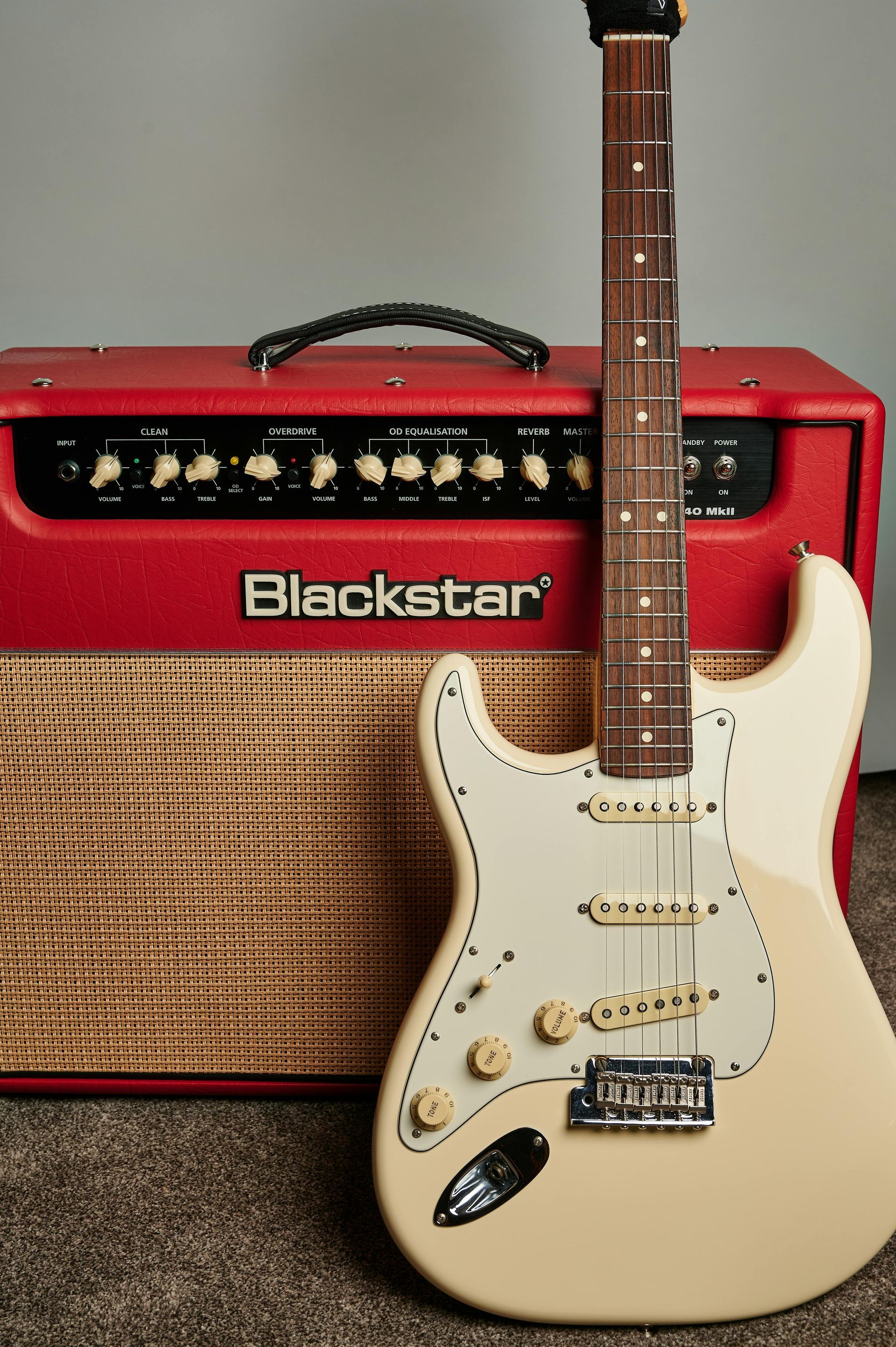How to Reduce Neck Pain as a Guitar Player
If you've ever finished a practice session with a stiff, aching neck, you're not alone. Neck pain is one of the most common complaints among guitarists of all levels.
The good news? Most guitar-related neck pain is preventable with some simple adjustments to your technique and setup…

Check Your Guitar Position
How you hold your guitar directly impacts your neck.
When playing seated, bring the guitar to you rather than hunching over to reach it. The headstock should be roughly at eye level, not pointing toward the floor.
When standing, adjust your strap so the guitar sits at the same height as when seated. A guitar that hangs too low forces you to look down constantly, straining your neck muscles.

Mind Your Posture
Good posture is crucial. Sit or stand with your back straight but not rigid.
Your shoulders should be relaxed and down, not hunched up toward your ears.
Try to keep your head balanced directly over your spine rather than jutting forward.
A simple exercise:
Imagine a string pulling upward from the crown of your head, lengthening your spine.
Practice this feeling both while playing and during daily activities.

Take Regular Breaks
Even with perfect posture, staying in one position too long causes strain. Set a timer for 25-30 minutes of practice, then take a 5-minute break to move around.
During these breaks, gently roll your shoulders and stretch your neck.
A simple neck stretch:
Tilt your right ear toward your right shoulder, holding for 15-20 seconds, then repeat on the left side.
Never force the stretch – it should feel gentle.

Strengthen Your Upper Back
Weak upper back muscles contribute significantly to neck pain. Simple exercises like shoulder blade squeezes can make a big difference...
Sit or stand tall, then pull your shoulder blades together as if trying to hold a pencil between them. Hold for 5 seconds, release, and repeat 10 times.

Review Your Setup
Your practice environment matters. Position your music stand at eye level so you don't have to look down to read it. If you play while watching instructional videos, raise your screen to eye level.
Make sure you have proper lighting to avoid straining forward to see fretboard positions. Indirect lighting that doesn't create glare on your screen or sheet music is ideal.

Consider Your Sleep Position
Guitar-related neck tension often worsens with poor sleeping positions.
Side sleepers should use a pillow that keeps their neck aligned with their spine.
Back sleepers benefit from a thinner pillow that doesn't push their head forward.

When To Seek Help
If you've tried these adjustments and still experience persistent pain, consider consulting a physical therapist with experience treating musicians. They can provide personalised exercises and identify any technique issues contributing to your discomfort.
Remember that pain is a warning sign. If you feel sharp pain while playing, stop immediately and rest. Pushing through pain can lead to more serious injuries that take longer to heal.
With mindful attention to your posture and playing habits, you can enjoy playing guitar without the neck pain that sidelines so many musicians.










